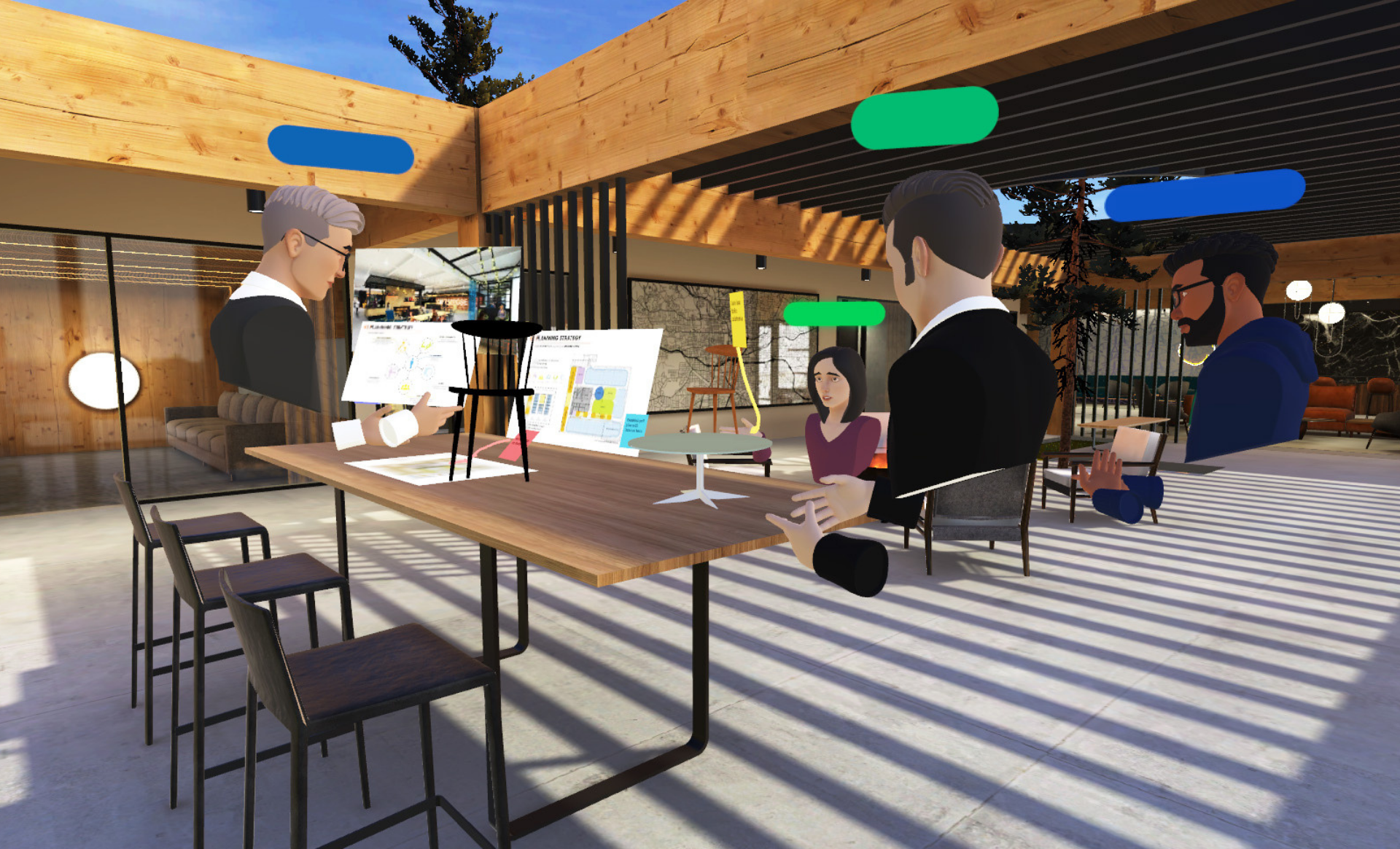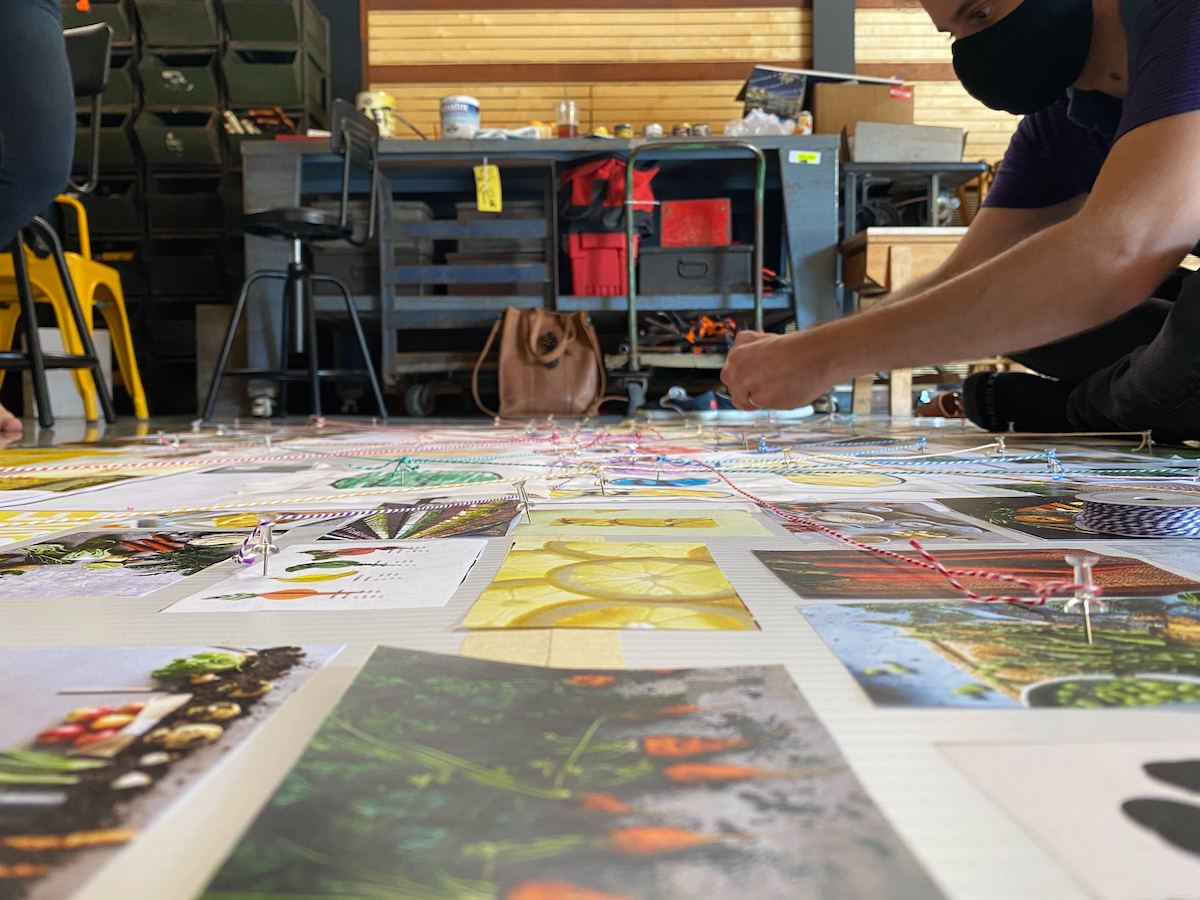
When it comes to conversations around the metaverse, people typically fall into one of three camps: “I don’t understand it,” “I’m skeptical of it,” or “I believe it’s the future.” Accounts in the popular press track its progress and how it will develop in the future. Here are some of the splashier recent headlines on the subject:
“This architecture firm is making up to $300,000 per project to design real estate in the metaverse”
“Most office meetings will take place in the metaverse within 3 years, Bill Gates says”
“Metaverse real estate sales top $500 million, and are projected to double this year”
What’s happening in the broader world will always have an impact on the spaces we design and thus the products we create. So, we wanted to know: How should the interiors industry be thinking about the metaverse both now and in the future?
First, a simple definition of the metaverse. One of the favorites that we’ve heard is simply “a 3D version of the internet.” For example, your online browsing was a solo activity in the past, but the metaverse offers a space where you could potentially interact with others while you shop. (Listen to this episode from season 3 of Design Nerds Anonymous to hear about the future of the B2B showroom experience in the metaverse.)
To help demystify the subject, we spoke with Adipat Virdi, immersive strategist and former global creative product lead for AR/VR at Facebook; Avinash Rajagopal, editor-in-chief at Metropolis; and Kat Schneider, digital design application specialist at IA Interior Architects. Here are four key takeaways from our conversations:
The metaverse isn’t meant to replace physical interactions.
Virdi encourages us to think of the metaverse as a strategic tool for business to use, rather than simply a tech innovation. To do so successfully, he recommends developing a metaverse presence that is:
- Beyond duplication: The metaverse should add a layer that you cannot experience in the physical environment. While duplication can be helpful, the point should not be to replace physical interaction or space.
- Interactive: Brands stand to gain the most from the metaverse by leveraging deeper engagement with customers. “When a brand is creating their presence in the metaverse, they aren’t just driving conversions of customers,” said Virdi. “They are creating a sandbox where their customers can interactwith the brand and not just transact with it.”
- Geared toward empathy: Forging connection must be at the core for building experiences in the metaverse.
.
The metaverse could help complex design issues get solved in a more collaborative way.
Kat Schneider shared how teams at IA Interior Architects are already using the metaverse both for client interactions and for internal engagement. “Throughout the pandemic, we, like many others, felt the absence of meaningful interactions that once took place while being together in a physical space,” Schneider told us. “Having previously worked with mixed reality to solve complex design problems, our team began to experiment with the idea of connecting in virtual space to explore alternative ways to collaborate and interact.”
Since then, her team has prototyped a wide array of environments: from virtual spaces where colleagues can comfortably learn about VR, to digital twins of existing projects, to meeting rooms, conference spaces, virtual happy hours, and branded customer engagement experiences. Schneider explained the advantages of creating these sorts of spaces: “Each environment we have designed sets out to solve a different set of problems, but all are centered around not needing to physically be next to someone in order to have a meaningful interaction with them. What we have found is that XR allows us to play freely with things that would limit us and our clients in our physical world — things like spatial constraints, travel requirements, various costs, and needing to adjust our expectations to what is physically possible.”
Generally, adapting to new technologies demands a great deal of time and effort from new users, but for Schneider and her team, virtual reality didn’t require a steep learning curve. “What we discover when we meet with our clients in the metaverse is that although the hardware may be different, it only takes seconds for the experience to transition into what already know and love from being together,” she said.
The result is a space where Schneider and her team can successfully interact and engage with others: “Quickly, we return to things like sitting around a fire to have a meaningful conversation, shaking hands with new colleagues, bumping into a teammate on the way to a meeting, and being able to work creatively with technology alongside one another. Virtual space allows us and our clients to extend reality so that we can continue to interact together as we always have, regardless of our physical location.”
The challenges of the real world could become challenges in the metaverse.
Rajagopal’s team at Metropolis has put together a Design Guide of the Metaverse, covering key developments for architects and designers. Two of the major challenges they currently face in the real world will also have to be considered in the metaverse: sustainability and inclusion.
Virtual and augmented reality have the potential to create more accessible spaces for exploration. But they could also create barriers. In this Metropolis article, Kaitlin Ugolik Phillips discusses the limits of accessibility in the metaverse: “Take VR headsets, for example. Despite decades of development, they are still quite expensive to own and bulky to wear, and the content they present is mostly geared to sighted, hearing people. The more immersive VR experiences become, the more parts of the body they involve — hands to hold controllers, even legs and arms to feed information into the virtual game or activity. But what if you can’t see, hear, speak, or move easily?” On the flip side, Phillips acknowledges the metaverse could also expand accessibility, pointing to healthcare as an example; the wider adoption of telehealth has enabled greater access to care at a distance.
And while at first glance, the metaverse might seem like an environmentally sustainable alternative, data centers pose a problem. The U.S. Department of Energy estimates that data centers account for 2 percent of the total electricity use in the United States. And that number only stands to expand as our data and server energy use continues to grow.
The workplace will drive demand for the metaverse.
Retail, entertainment, and gaming are leading the way in developing a presence in the metaverse. We at ThinkLab love to look to the B2C side for inspiration on how B2B can think about new “phygital” futures. But, when it comes to the metaverse, adoption may happen in the workplace first.
This evolution looks something like this: In the past, workplaces were the spot where people were first exposed to technology. You probably used a computer in your office before you had one at home. Fast-forward to today, and the opposite is true: Consumer use of technology has driven what’s used in the workplace (the rise of BYOT and iPhone’s dominance over BlackBerry). But Forrester expects a flip in that model when it comes to the metaverse and predicts a “Reverse consumerization of IT, whereby some employees who learn how to use metaverse-style experiences at work will want to use them at home, too.”
While the metaverse is still in its infancy, and we may have more questions than answers, who better to begin architecting its future than the design industry?
Meredith Campbell is a member of the Research & Content Development team for ThinkLab, the research division of SANDOW Design Group. At ThinkLab, we combine SANDOW Media’s incredible reach to the architecture and design community through brands like Interior Design Media, Metropolis, Luxe, and Material Bank with proven market research techniques to uncover relevant trends and opportunities for the design industry. Join in to explore what’s next at thinklab.design/join-in.
*Photo courtesy of IA Interior Architects



